Symphyotrichum ciliolatum (Lindley's Aster) - photos and description
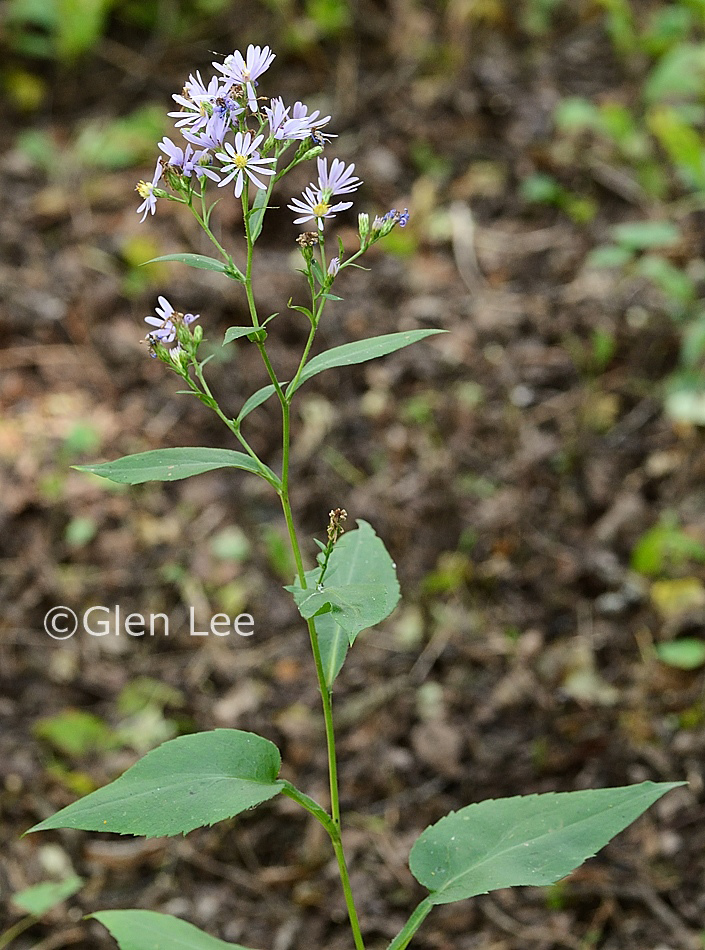
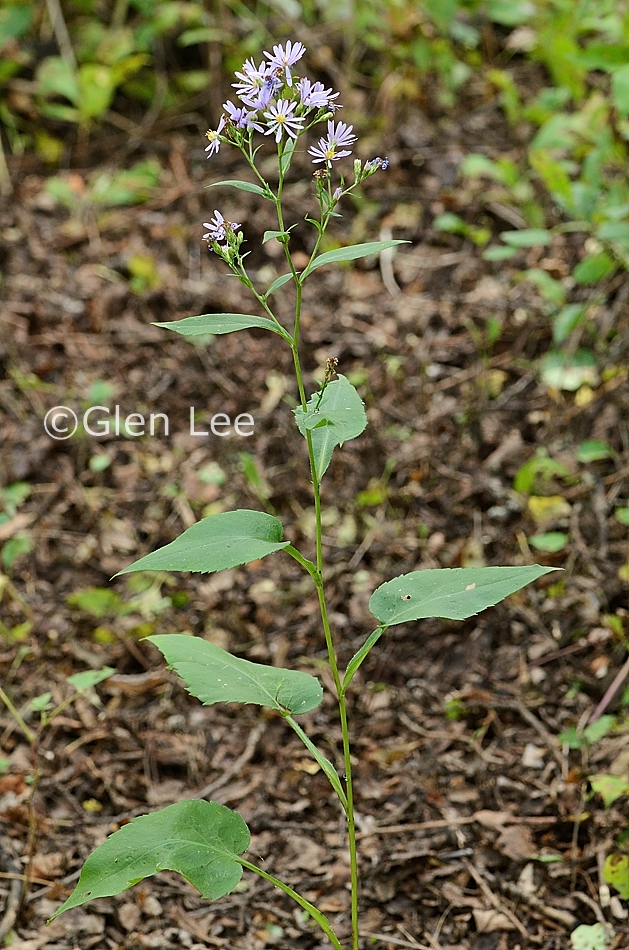
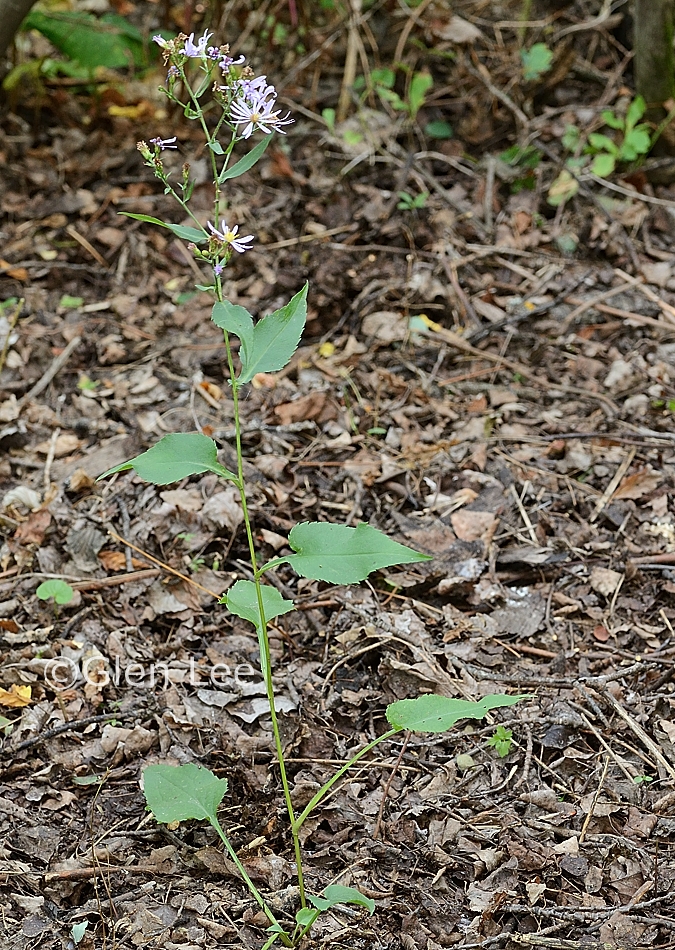
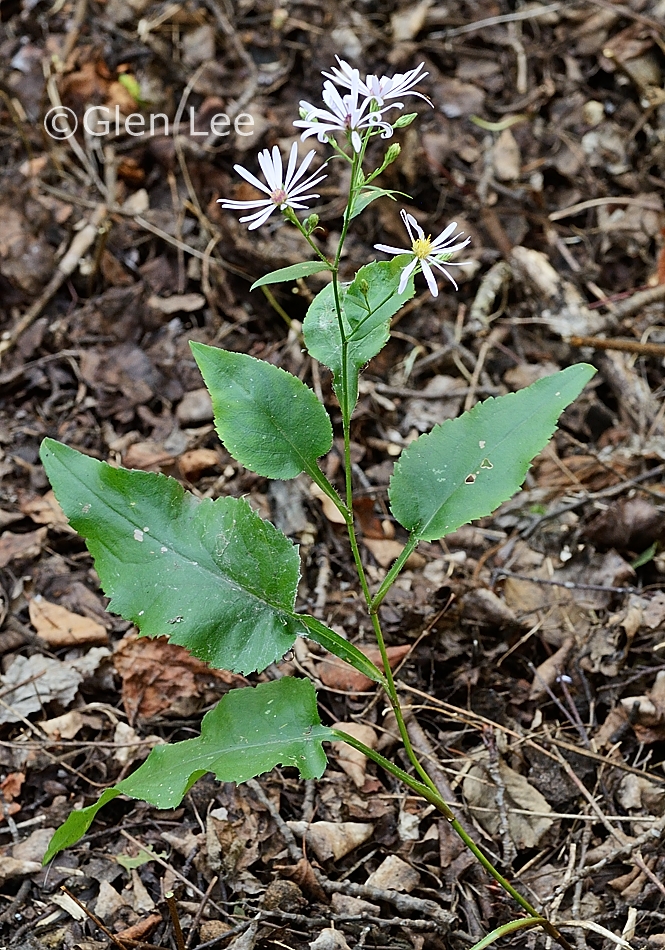
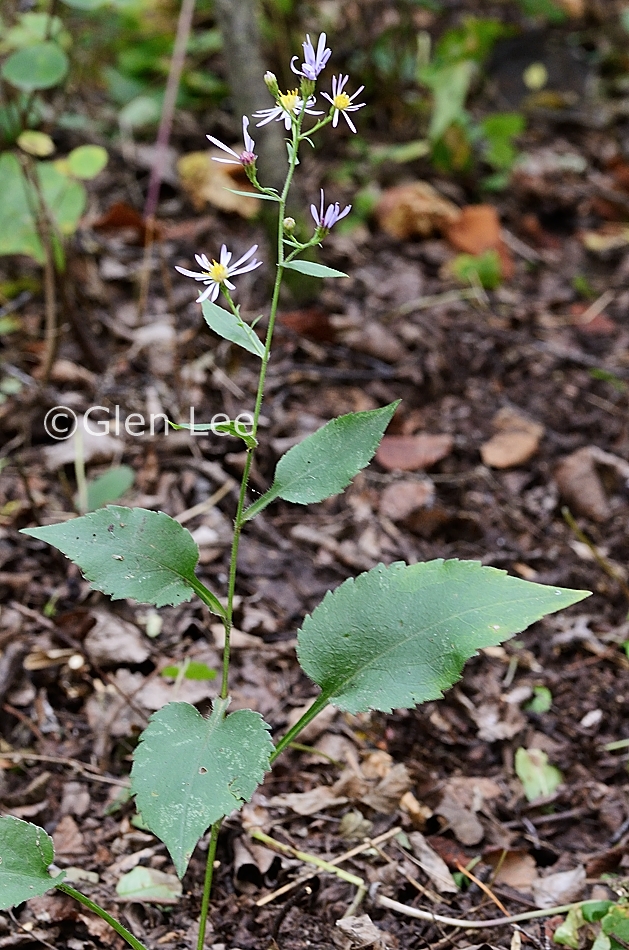
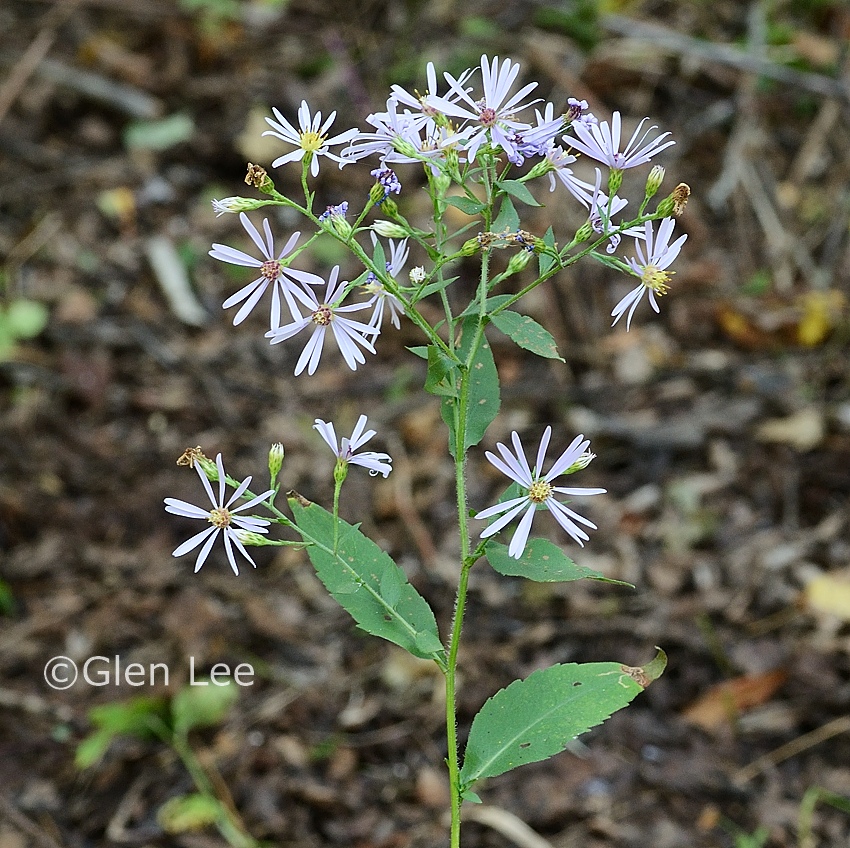
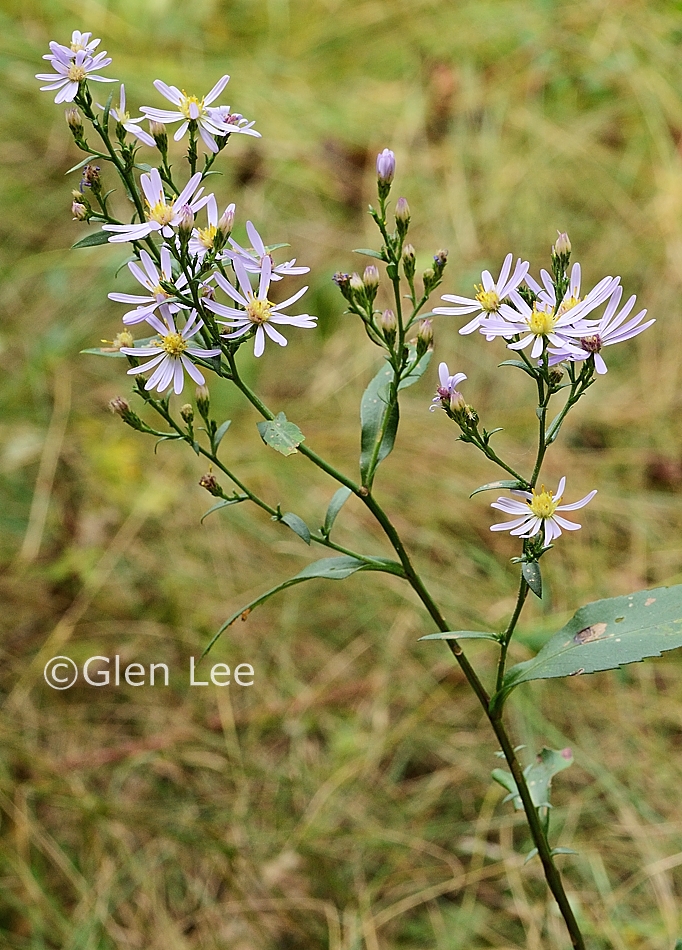
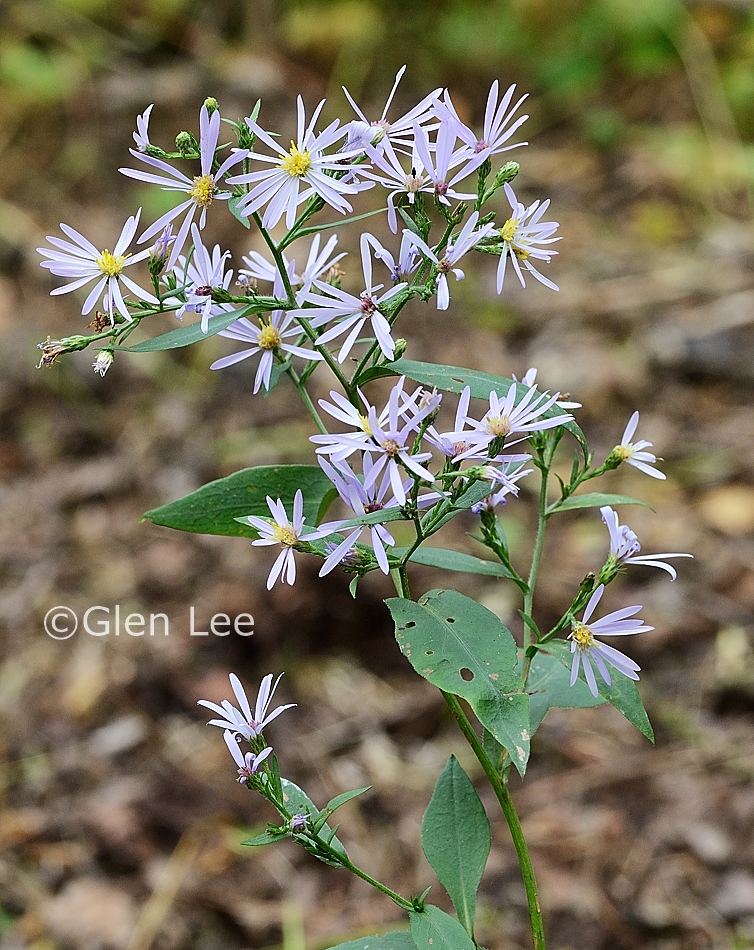
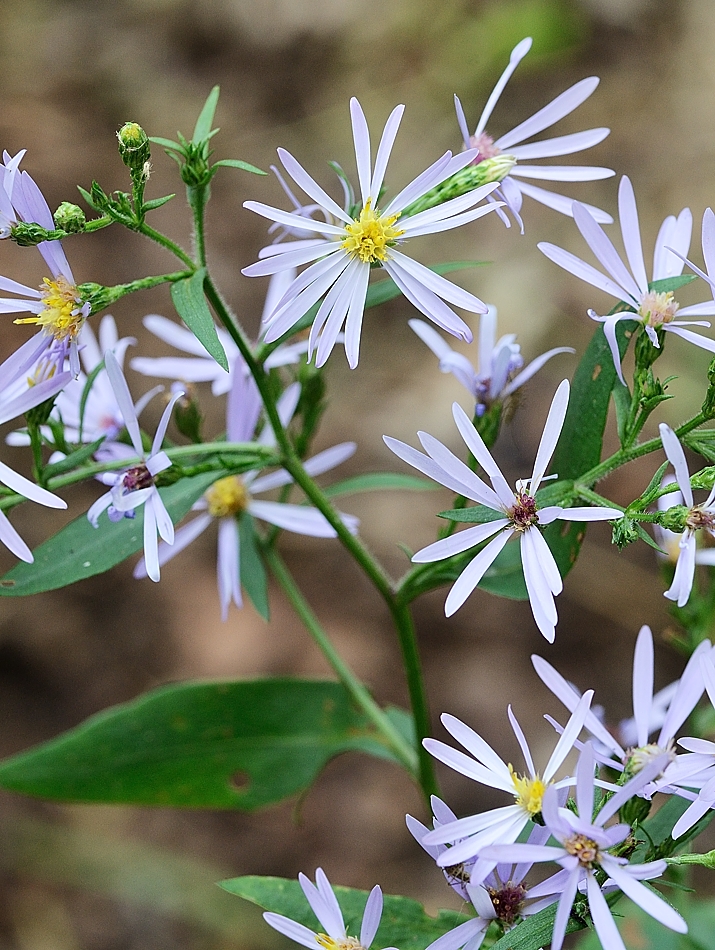
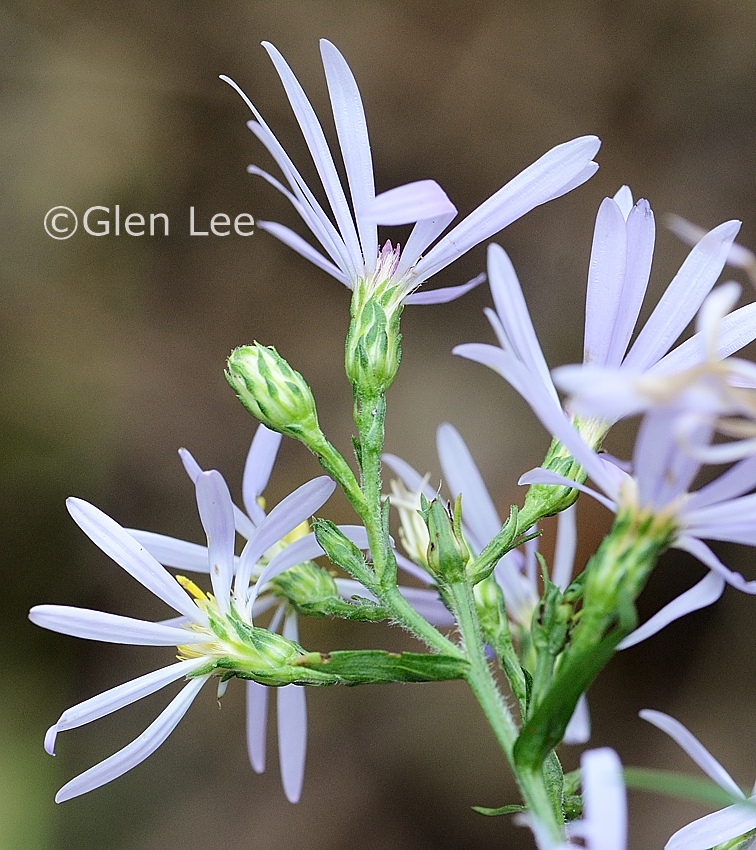
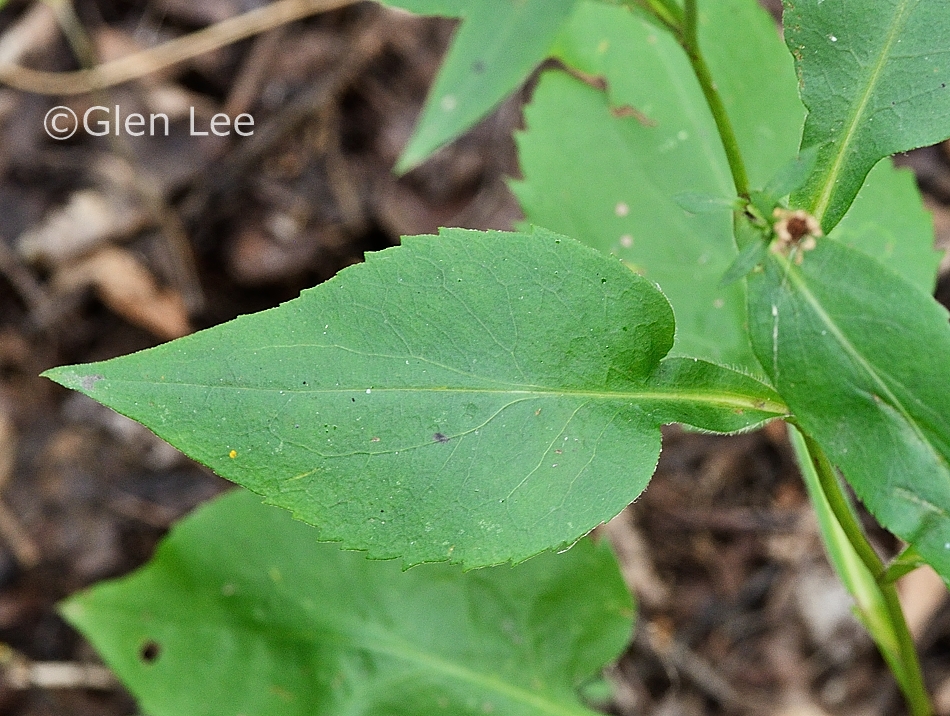
Leaf mid-stem in above photo
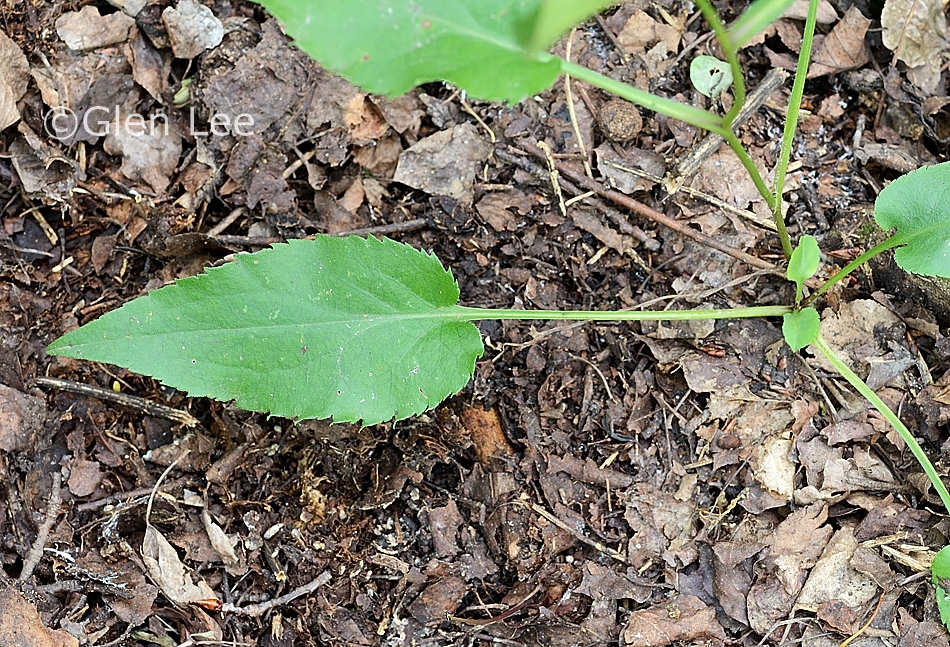
Basal leaf in above photo.
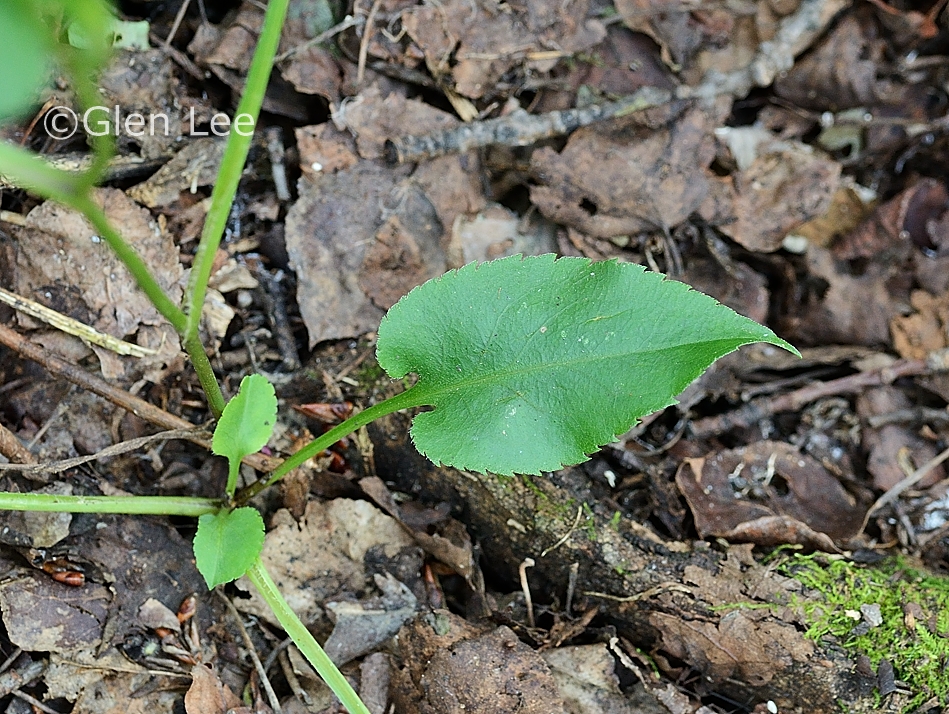
Basal leaf in above photo.
Origin: Native.
General: Herbaceous perennial with an erect growth habit. Stems mostly glabrous, except puberulent towards the top, particularly in the inflorescence.
Flowers: Inflorescence paniculate with few to many flower heads. Rays are violet in colour, we measured a flower head to 25 mm in diameter.
Leaves: Basal leaves and lower leaves ovate and cordate, stalked. Stem leaves alternate. Leaves mid-stem with winged petioles, the margins of the wings ciliate, leaves otherwise glabrous. Top-most leaves smaller, lanceolate, stalkless. Lower leaves and leaves mid-stem are serrate, top-most leaves are entire.
Height: Height listed in Budd's Flora to 75 cm, we measured plants to 62 cm tall.
Habitat: Woodlands.
Abundance: Common.
Synonym: Listed in some of the field guides we use as Aster ciliotatus.
Similar species: This plant
is very similar to Symphyotrichum laeve. To distinguish between the
two:
- The basal leaves and lower stem leaves of Symphyotrichum ciliolatum
are both cordate and stalked, ligules blue (Taxonomic Reminder for Recognizing Saskatchewan Plants).
The leaves of S. laeve are not cordate.
- Symphiotrichum laeve has some stem leaves auriculate-clasping,
is glabrous and glaucous, ligules blue (Taxonomic Reminder for Recognizing Saskatchewan Plants). The
leaves of S. ciliolatum are not auriculate.
- I have observed S. ciliolatum grows under tree cover, while S. laeve can be found along roadsides, in ditches, and edges of trees, not usually under tree cover.
When and where photographed: